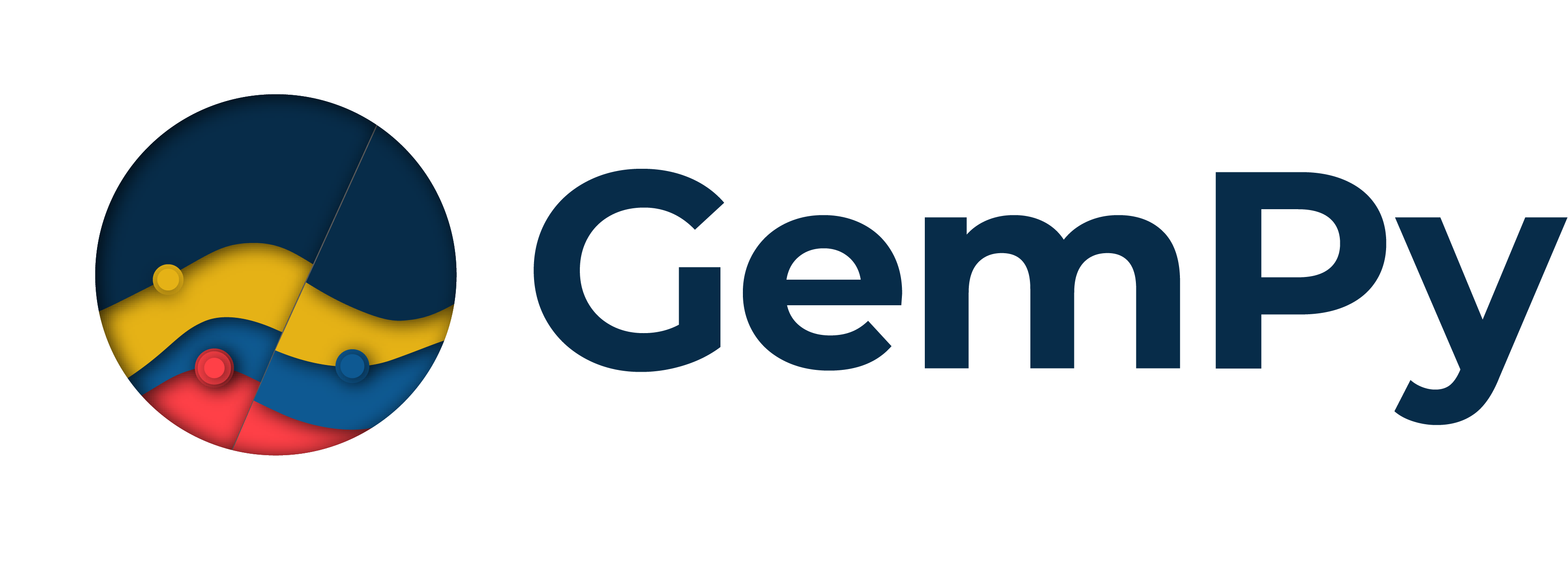Note
Go to the end to download the full example code
GemPy Models - Some More Complex Examples¶
Importing gempy
import gempy as gp
import gempy_viewer as gpv
# Aux imports
import numpy as np
import os
Choose a model and load the corresponding data set in the line below¶
Model 1: Discordant layering
Model 2: Anticlinal layering
Model 3: Parallel steep dipping layers
Model 5: Normal faulting
Model 6: Synclinal layering
Model 7: Graben structure with two faults
Model 8: Similar to Model 5
Model 9: Parallel flat dipping layers
data_path = os.path.abspath('../..')
def create_example(name_model, plot_section=True):
"""
Create an inter_data from one of the examples data_set
Attr:
name_model (str): name of the model that you want to generate. It has to be in ['Model 1' ,'Model 2', 'Model 3', 'Model 4','Model 5' 'Model 6','Model 7',
'Model 8', 'Model 9']
save_pickle (bool, str): Save to a pickle the interp_data object. You can pass the path as a string otherwse
the default name will be given
plot_section (bool)
"""
name_list = np.array(['Model 1', 'Model 2', 'Model 3', 'Model 4', 'Model 5', 'Model 6', 'Model 7', 'Model 8', 'Model 9'])
assert name_model in name_list, 'Name model must be in the following list: ' + str(name_list)
# Extract number of the model
n_model = name_model[-1]
# # Load right gempy geodata
geo_data: gp.data.GeoModel = gp.create_geomodel(
project_name=name_model,
extent=[0, 2000, 0, 2000, 0, 1600],
resolution=[50, 50, 50],
refinement=6, # * For this model is better not to use octrees because we want to see what is happening in the scalar fields
importer_helper=gp.data.ImporterHelper(
path_to_orientations=data_path + "/data/input_data/lisa_models/foliations" + n_model + ".csv",
path_to_surface_points=data_path + "/data/input_data/lisa_models/interfaces" + n_model + ".csv",
)
)
# Set the right sequential pile
subset_list_1 = np.array(['Model 1'])
subset_list_2 = np.array(['Model 5', 'Model 8'])
subset_list_3 = np.array(['Model 2', 'Model 3', 'Model 9', 'Model 6'])
subset_list_4 = np.array(['Model 7'])
### Model 1 - Discordant layering ###
if name_model in subset_list_1:
gp.map_stack_to_surfaces(
gempy_model=geo_data,
mapping_object={
"Strat_Series_1": ('Sandstone', 'Siltstone', 'Shale'),
"Strat_Series_2": ('Sandstone2', 'Siltstone2', 'Shale2')
},
)
### Model 5 - One normal Fault ###
### Model 8 - ###
elif name_model in subset_list_2:
gp.map_stack_to_surfaces(
gempy_model=geo_data,
mapping_object={
"Fault_Series": 'Main_Fault',
"Strat_Series": ('Sandstone', 'Siltstone', 'Shale', 'Sandstone_2', 'Schist', 'Gneiss')
},
)
gp.set_is_fault(geo_data, ['Fault_Series'])
elif name_model in subset_list_3:
### Model 2 - Aufwölbung (durch Salzstock?) ###
### Model 3+9 - Parallele NNE Schichtung ohne Verwerfung ###
### Model 6 - Mulde ###
gp.map_stack_to_surfaces(
gempy_model=geo_data,
mapping_object={
"Strat_Series": ('Sandstone', 'Siltstone', 'Shale', 'Sandstone_2', 'Schist', 'Gneiss')
},
)
elif name_model in subset_list_4:
### Model 7 - Graben ###
gp.map_stack_to_surfaces(
gempy_model=geo_data,
mapping_object={
"Fault_1": 'Fault_1', "Fault_2": 'Fault_2',
"Strat_Series": ('Sandstone', 'Siltstone', 'Shale', 'Sandstone_2', 'Schist', 'Gneiss')
},
)
gp.set_is_fault(geo_data, ['Fault_1', 'Fault_2'])
else:
print('You would never reach this point. Look for the bug')
# Interpolation and Computation
sol = gp.compute_model(
gempy_model=geo_data,
engine_config=gp.data.GemPyEngineConfig(backend=gp.data.AvailableBackends.PYTORCH)
)
if plot_section is True:
# 2D Plot
gpv.plot_2d(geo_data, cell_number=['mid'], direction='y', show_data=True)
gpv.plot_3d(geo_data, image=False)
return geo_data.structural_frame
Discordant layering 1¶
create_example('Model 1')
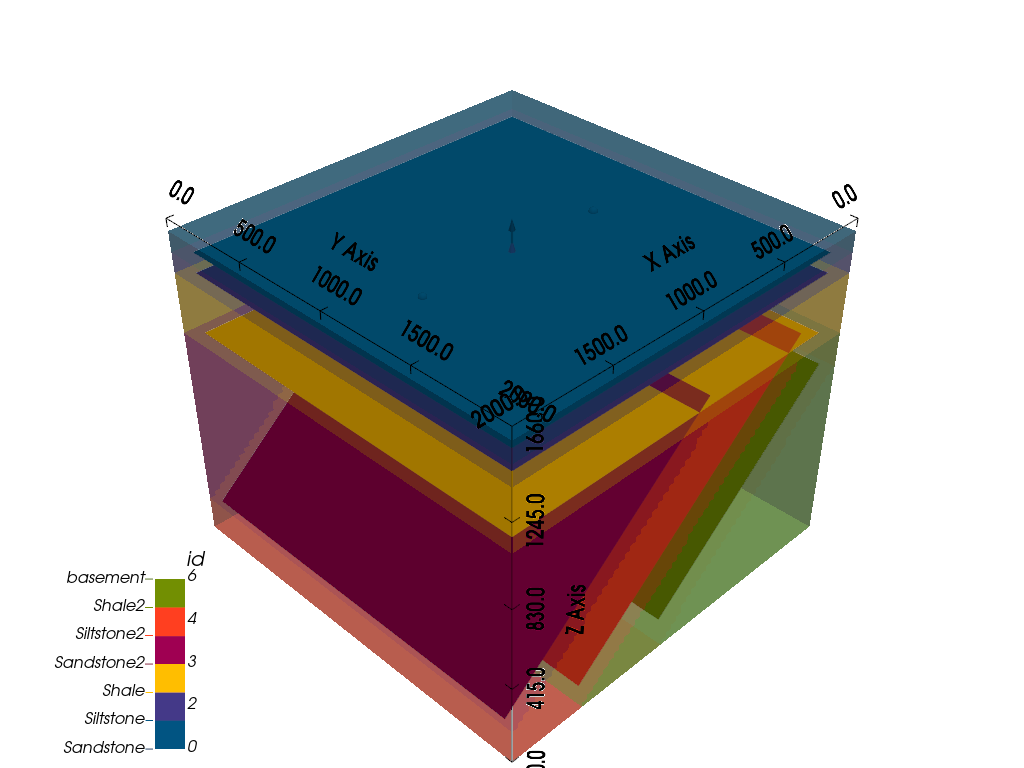
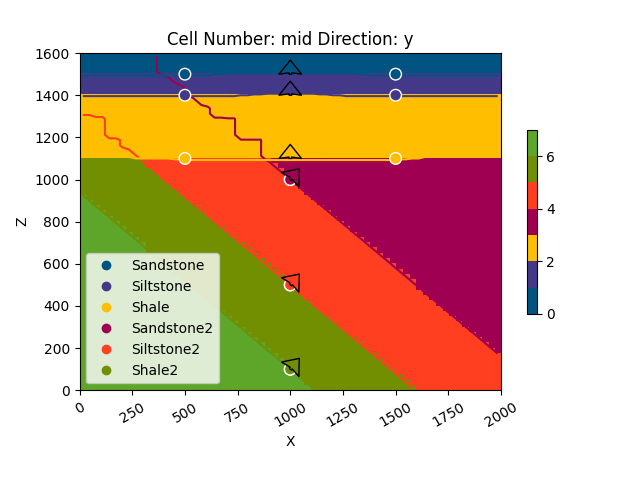
Setting Backend To: AvailableBackends.PYTORCH
/home/leguark/gempy/gempy/core/data/geo_model.py:164: UserWarning: You are using refinement and passing a regular grid. The resolution of the regular grid will be overwritten
warnings.warn(
Condition number: 19068.08567237569.
Condition number: 1639.3994498405277.
Discordant layering 2¶
create_example('Model 2')
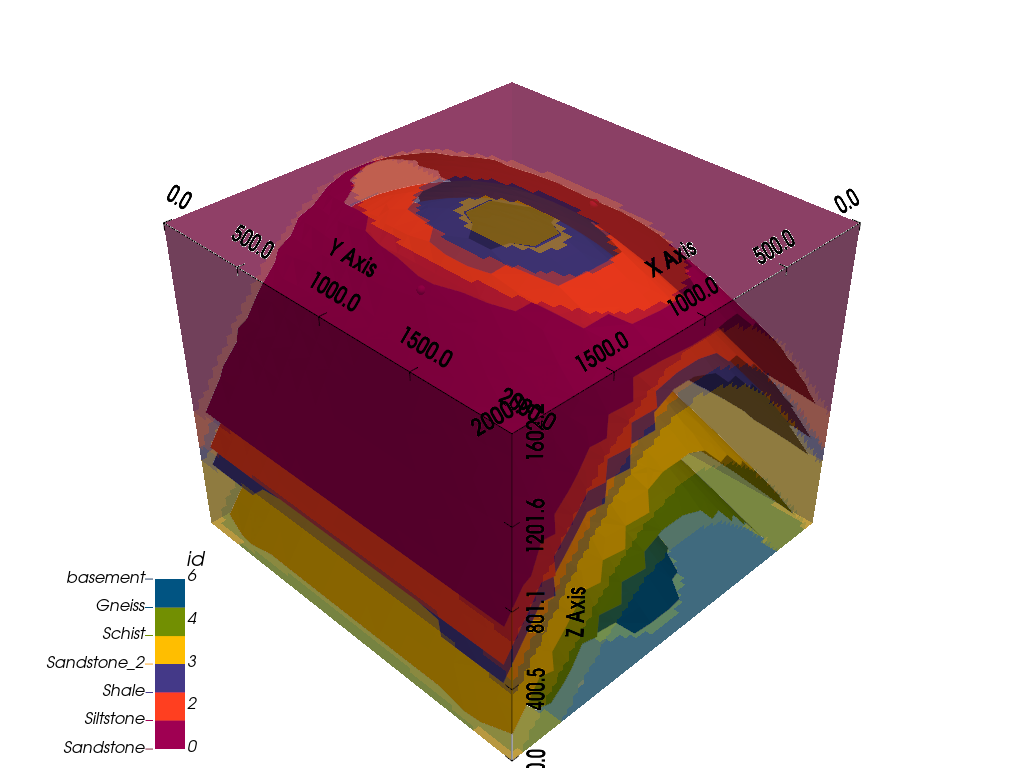
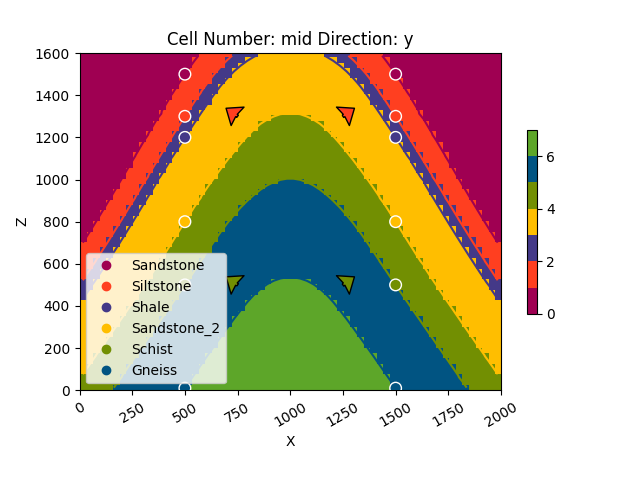
Setting Backend To: AvailableBackends.PYTORCH
/home/leguark/gempy/gempy/core/data/geo_model.py:164: UserWarning: You are using refinement and passing a regular grid. The resolution of the regular grid will be overwritten
warnings.warn(
Condition number: 56767.66777170984.
Discordant layering 3¶
create_example('Model 3')
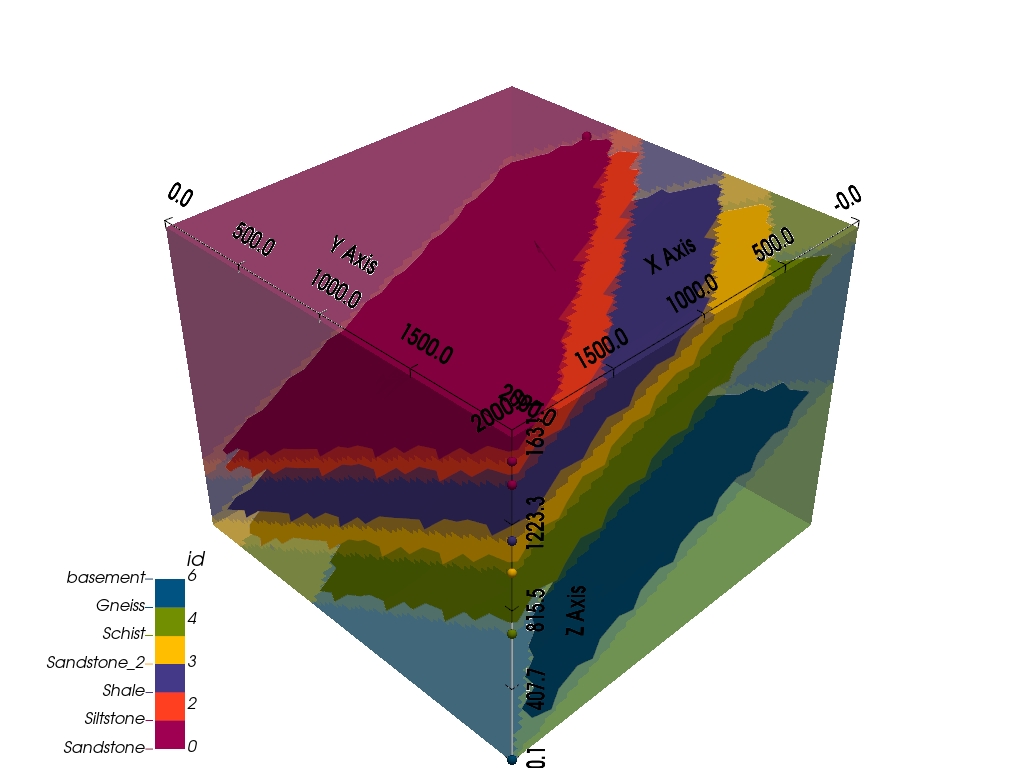
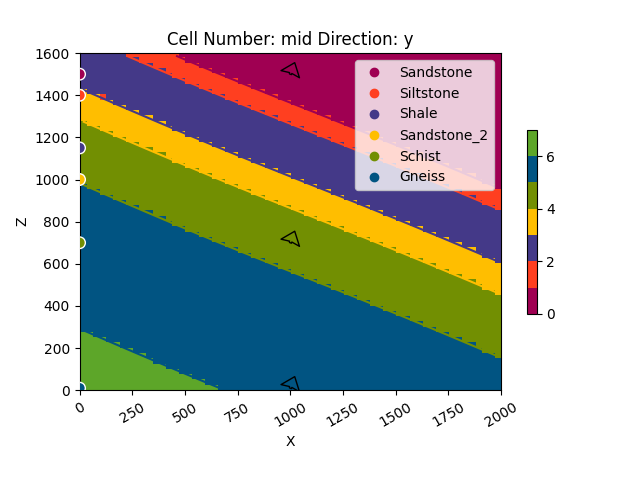
Setting Backend To: AvailableBackends.PYTORCH
/home/leguark/gempy/gempy/core/data/geo_model.py:164: UserWarning: You are using refinement and passing a regular grid. The resolution of the regular grid will be overwritten
warnings.warn(
Condition number: 147199.78698862705.
One normal Fault 1¶
create_example('Model 5')
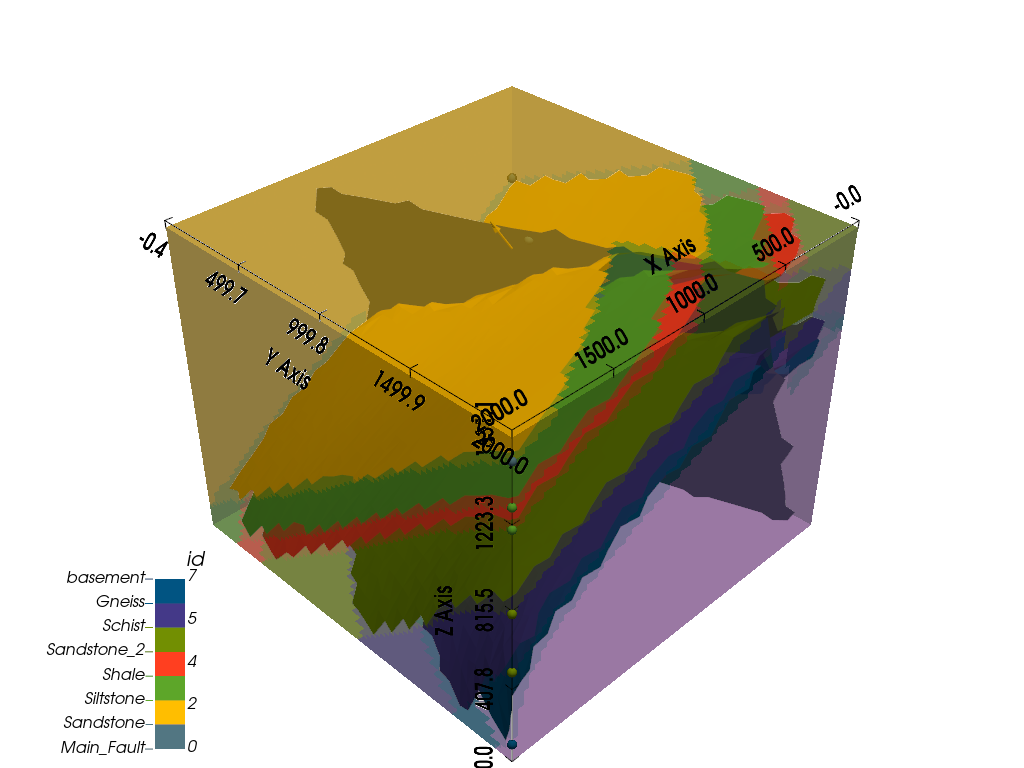
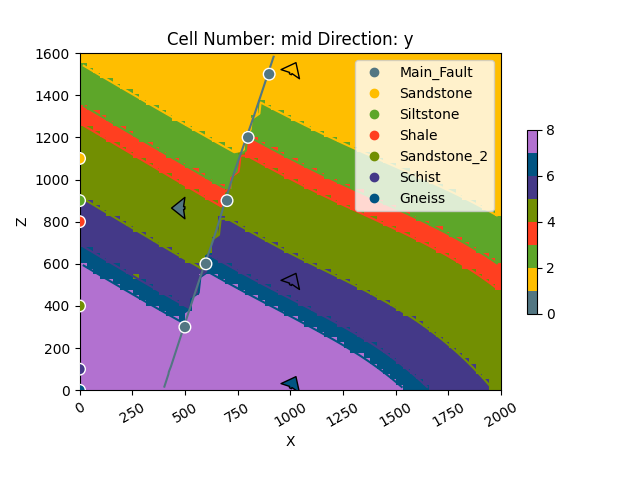
Setting Backend To: AvailableBackends.PYTORCH
/home/leguark/gempy/gempy/core/data/geo_model.py:164: UserWarning: You are using refinement and passing a regular grid. The resolution of the regular grid will be overwritten
warnings.warn(
Condition number: 8399.364426033622.
Condition number: 190315.66279573357.
Fold¶
create_example('Model 6')
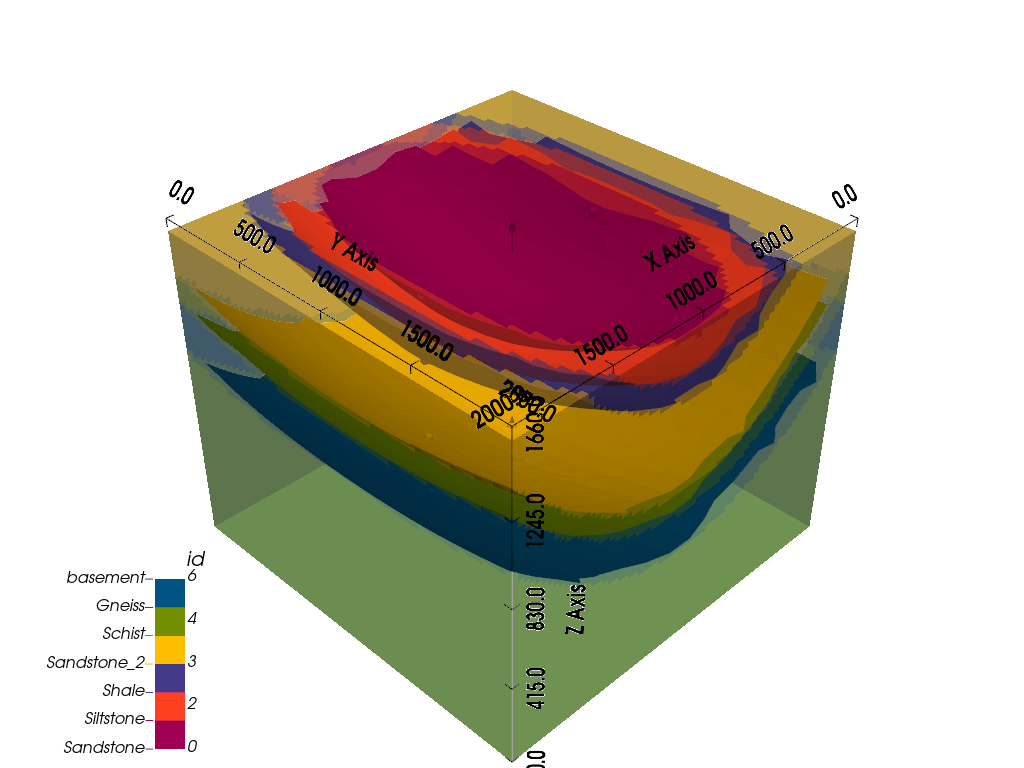
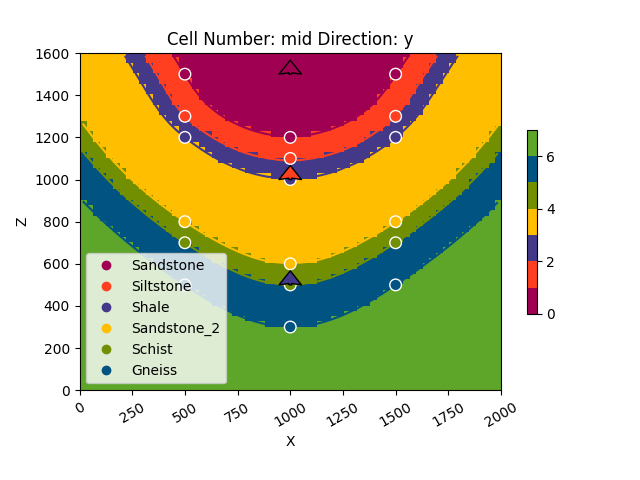
Setting Backend To: AvailableBackends.PYTORCH
/home/leguark/gempy/gempy/core/data/geo_model.py:164: UserWarning: You are using refinement and passing a regular grid. The resolution of the regular grid will be overwritten
warnings.warn(
Condition number: 89014.20636012057.
Graben¶
create_example('Model 7')
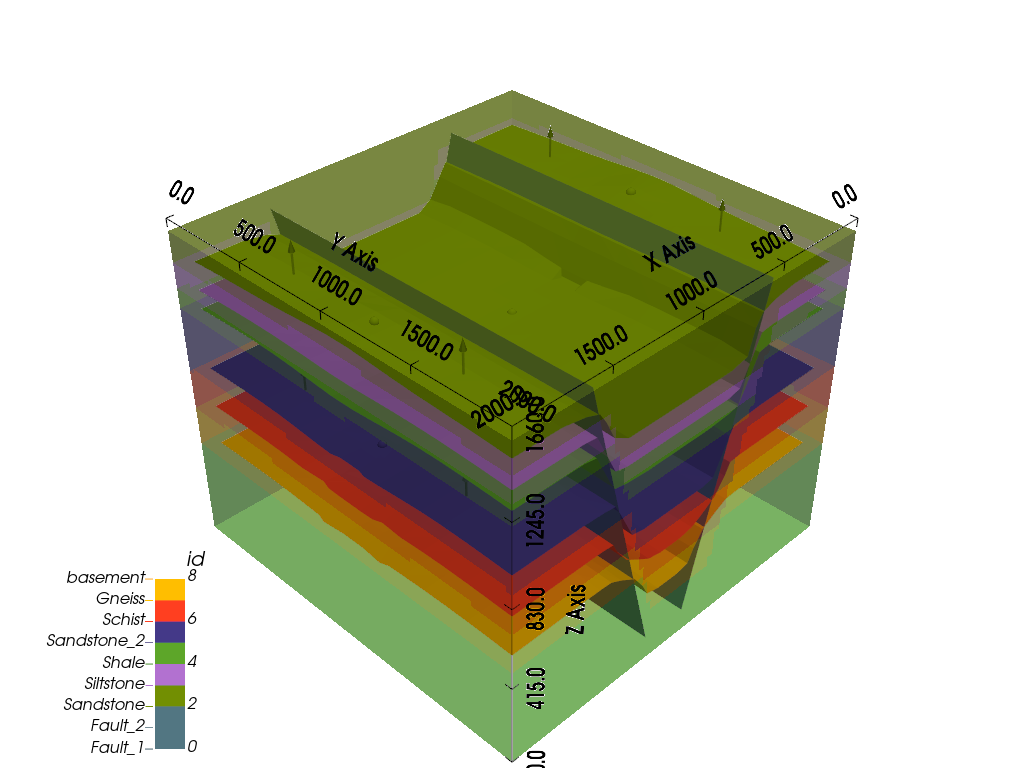
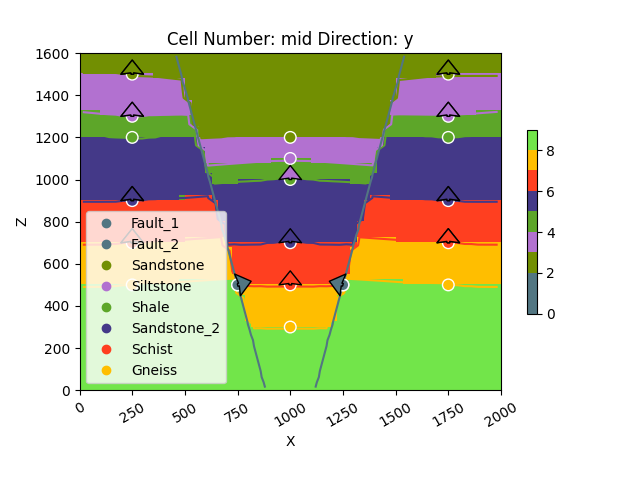
Setting Backend To: AvailableBackends.PYTORCH
/home/leguark/gempy/gempy/core/data/geo_model.py:164: UserWarning: You are using refinement and passing a regular grid. The resolution of the regular grid will be overwritten
warnings.warn(
Condition number: 59.13193003681042.
Condition number: 29351.66447265675.
Condition number: 336501.2964991108.
One normal Fault 2¶
create_example('Model 8')
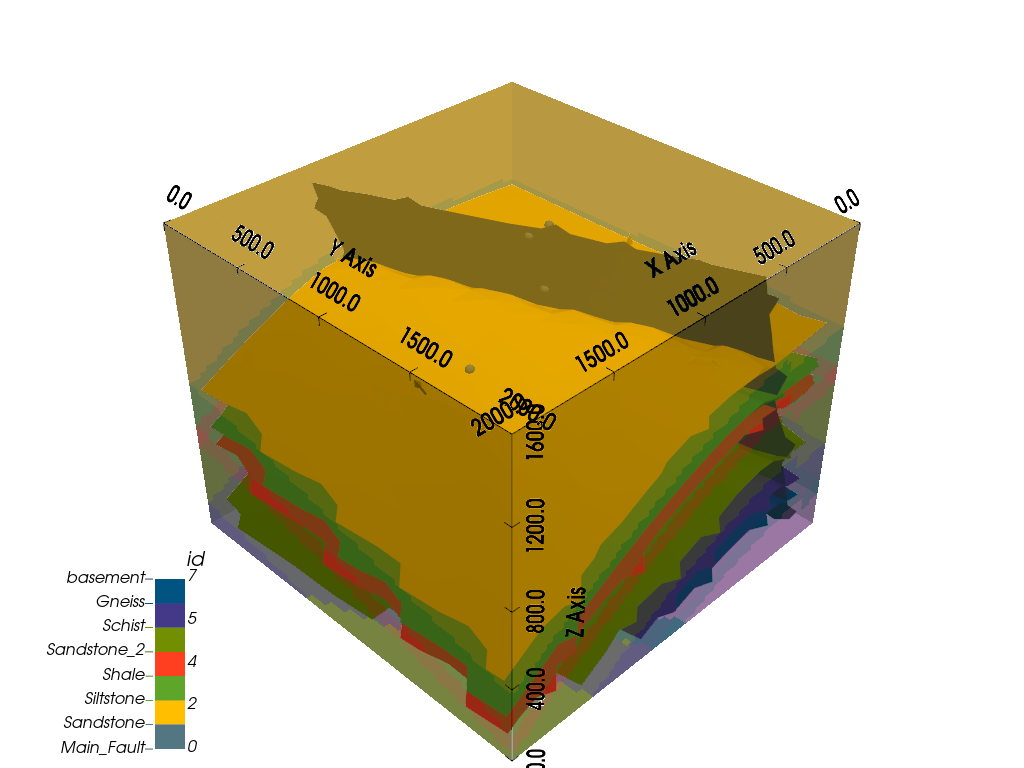
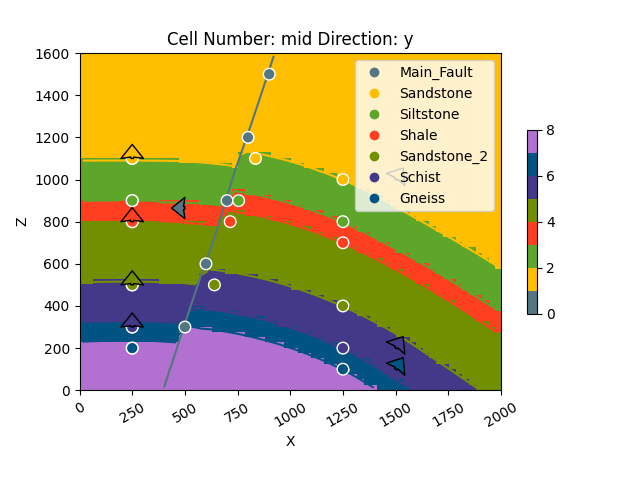
Setting Backend To: AvailableBackends.PYTORCH
/home/leguark/gempy/gempy/core/data/geo_model.py:164: UserWarning: You are using refinement and passing a regular grid. The resolution of the regular grid will be overwritten
warnings.warn(
Condition number: 2576.949018360295.
Condition number: 130643.09439710453.
Horizontal tilted¶
create_example('Model 9')
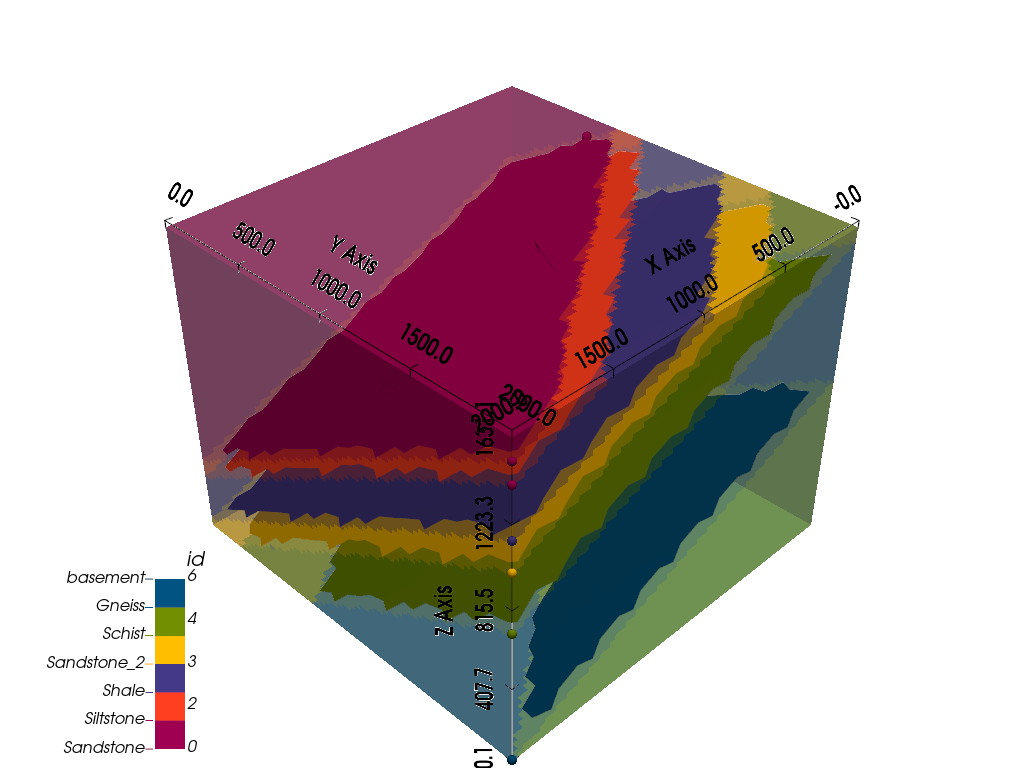
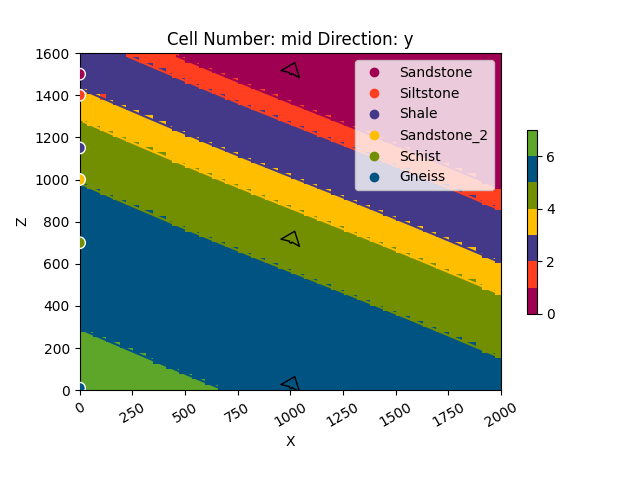
Setting Backend To: AvailableBackends.PYTORCH
/home/leguark/gempy/gempy/core/data/geo_model.py:164: UserWarning: You are using refinement and passing a regular grid. The resolution of the regular grid will be overwritten
warnings.warn(
Condition number: 147199.78698854955.
# generate_all_models(['Model 1', 'Model 2', 'Model 3',
# 'Model 5', 'Model 6', 'Model 7',
# 'Model 8', 'Model 9'])
Total running time of the script: (0 minutes 15.837 seconds)
